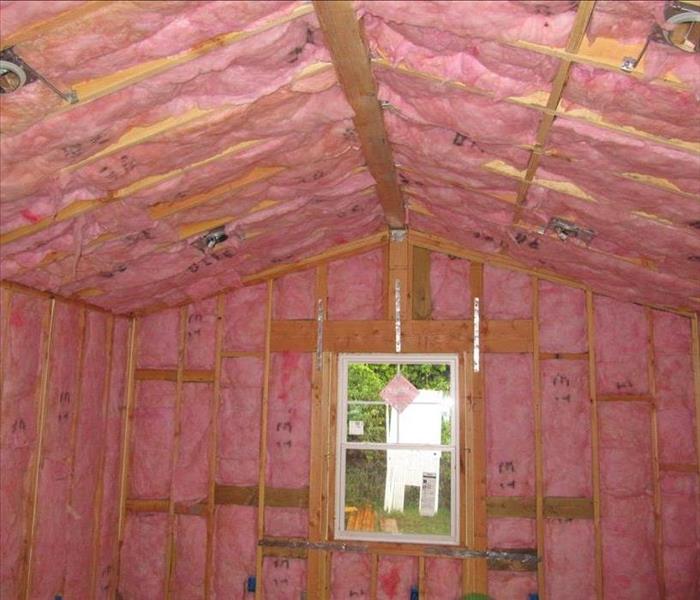Types of Insulation (Pros and Cons)
7/26/2018 (Permalink)
The truth is, there is no one-size-fits-all approach to home insulation. All homes are created differently. There are a few factors to consider when choosing the right insulation for your home including climate, installation, cost, and product performance. It is also important to consider a product’s thermal performance rating. This is known as the R-value.
- Fiberglass- This is by the far the most commonly used insulation. It usually comes in rolls pre-sized to fit between standard joists and studs. Fiberglass has been the go-to choice for new construction for both DIY homeowners and professionals. Not to mentioned it is relatively affordable.
- Mineral Wool- This is a definite DIY installation as this tends to hold shape well. It is composed of recycled materials and has fire-retardant properties. Mineral wool is also known as rock wool or slag wool.
- Loose Fill- For filling nooks and crannies in your attics, your best bet may be to use a loose-fill insulation. This is composed of fiberglass or cellulose. This product is blown into place with a special machine and does a great job of filling gaps. On the down side, there have been some reports that it can compress overtime, losing effectiveness. Also, keep in mind that for some attics or roof structures, cellulose may be too heavy.
- Spray Foam- This formula offers a high R-value and can fit in just about any tight space when it dries hard, providing a cozy home. This option of insulation is a bit more expensive than other types and does require the help of professionals, but it can cut down on other weatherizing tasks, such as caulking.
- Rigid Foam- These rigid foam panels are commonly made of polystyrene, polyisocyanurate, or polyurethane. It helps slow heat transfer through structural elements like studs. It is more expensive than batt and blanket insulation, and hard to fit into awkward corners.
- Structural Insulated Panels(SIPs)- These panels are airtight structural elements that help with noise reduction and can provide energy savings up to 14%. They can be installed in walls, ceilings and floors. They are on the pricier side and are used mostly for new construction.
- Radiant Barriers and Reflective Systems- This type of insulation system has highly reflective materials which helps reflect heat away from the house. They are installed on the underside of a roof and reduce radiant heat transfer from the sun, reducing cooling costs for your home.
Source: www.bobvila.com






 24/7 Emergency Service
24/7 Emergency Service